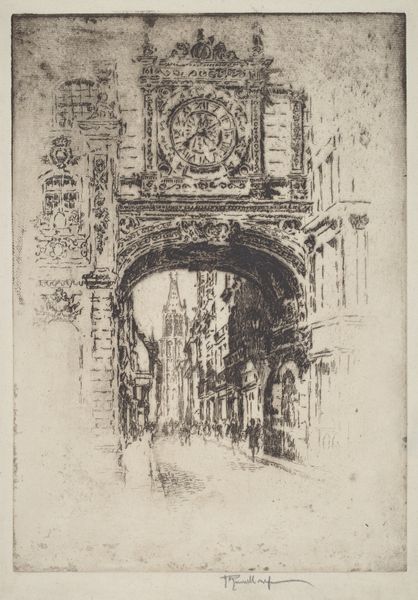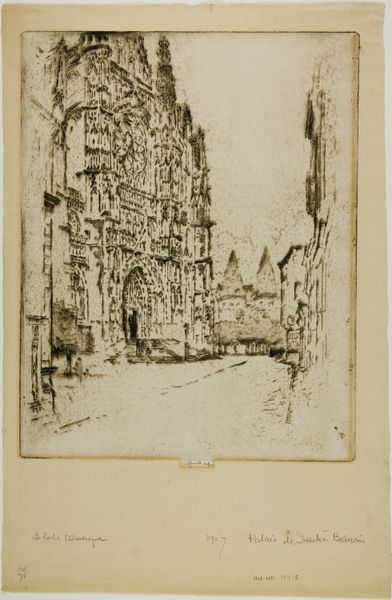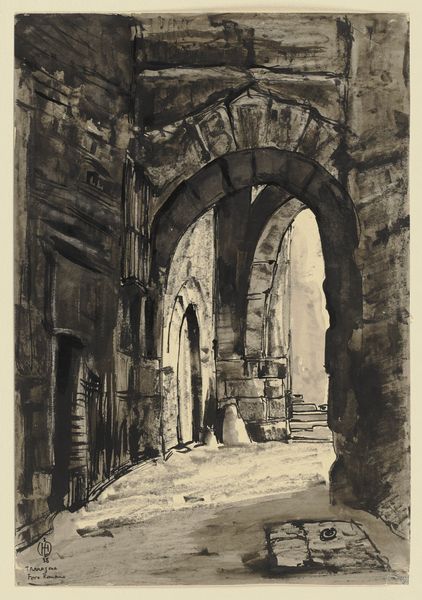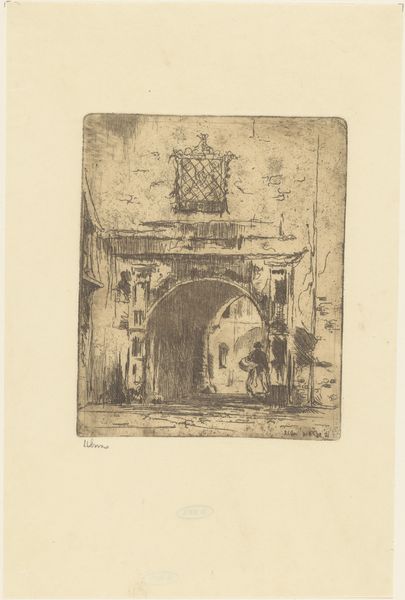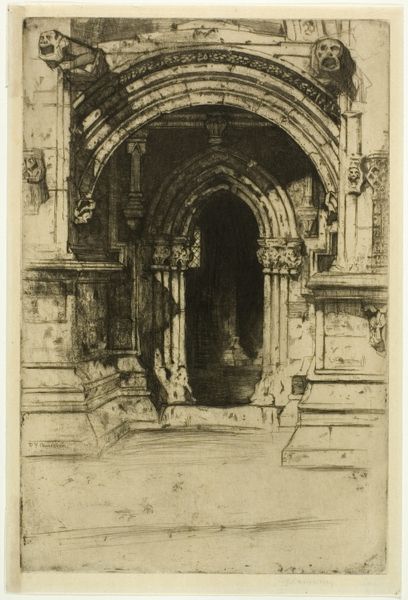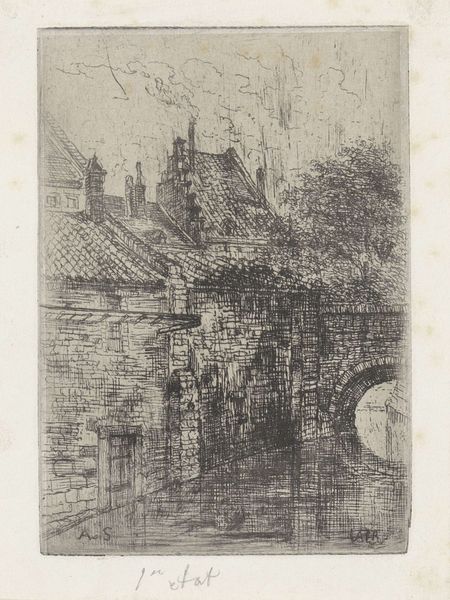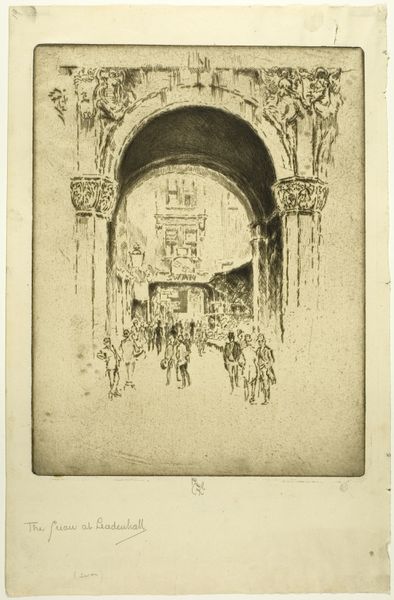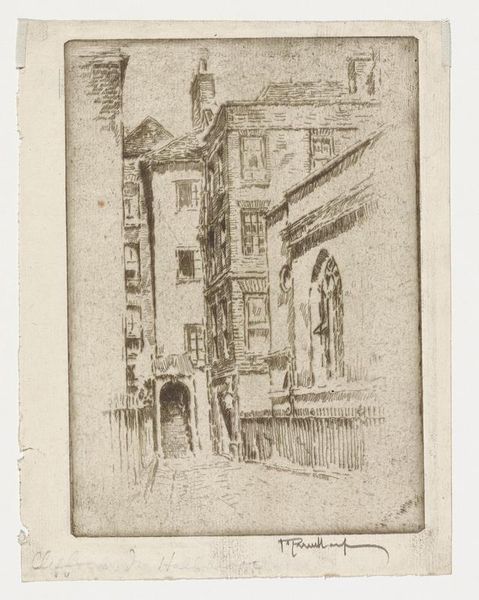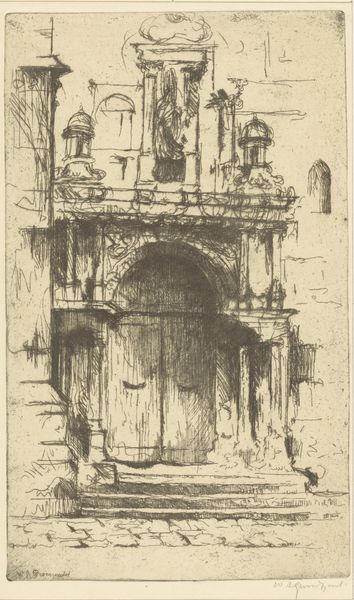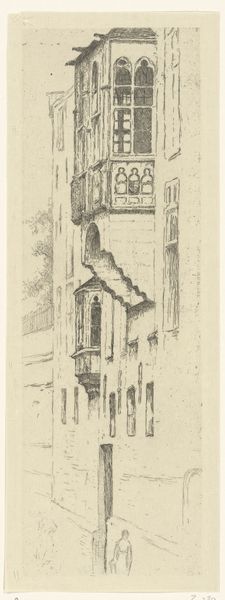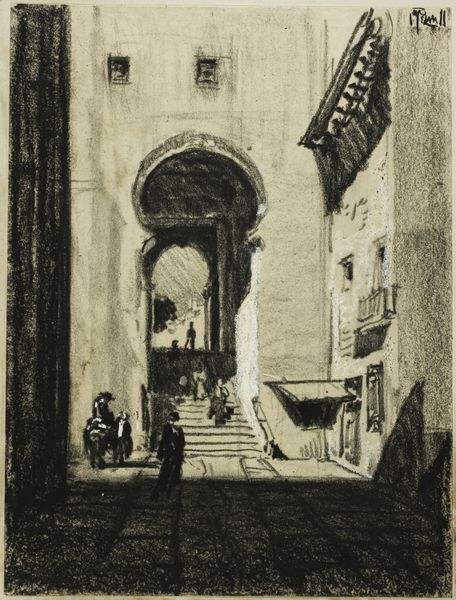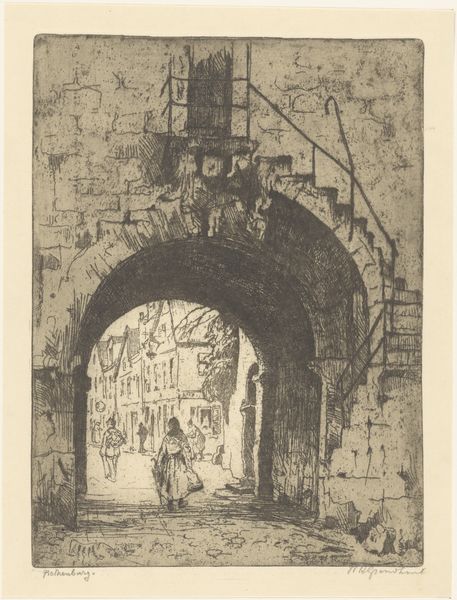
Dimensions: 251 × 177 mm (image); 270 × 193 mm (sheet)
Copyright: Public Domain
Editor: Joseph Pennell's 1907 etching "Grosse Horloge, Rouen," at the Art Institute of Chicago, presents a striking street scene. The intricacy of the etched lines really draws me in, especially given the detailed architecture. What jumps out to you? Curator: Considering the materials and process is crucial. Etching itself involves a collaboration of labor - from the making of the plate, the mordant application and the very act of printing. Pennell chose etching for this image, allowing for reproduction and broader consumption, marking a shift in how art and architecture were disseminated. It is no longer reserved to wealthy patrons but to ordinary people. Editor: That’s interesting. I hadn’t considered the wider reach printmaking allowed. Curator: Exactly. Think about the availability of images like this influencing urban planning, even tourism. And Rouen, like many industrialized cities at the time, was rapidly changing, causing social implications on working class, their access to and through the city space itself. Now, do you see Pennell presenting a critical view? Editor: I'm not sure if I'd call it critical. Perhaps more observational. The blurring effect softens any harshness. Curator: Perhaps. But that softening, achieved through specific manipulations of the etching process, might also obscure the realities of urban life for many. It brings up questions of whose Rouen is represented, and for whom. Editor: I never thought of it that way, as almost erasing a part of the population. Thank you for sharing that viewpoint! Curator: My pleasure. Understanding the materials, production and purpose helps to bring it into perspective.
Comments
No comments
Be the first to comment and join the conversation on the ultimate creative platform.
